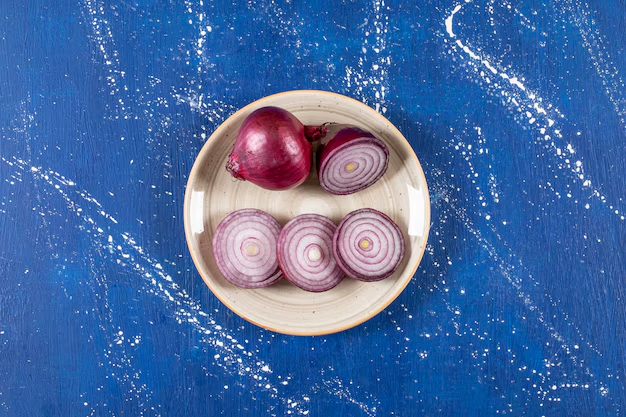How to Keep Onions Fresh in the Refrigerator and Maximize Their Shelf Life
Onions are a kitchen staple known for their robust flavor and versatility in numerous dishes, from soups to stir-fries. They are celebrated for both their culinary and nutritional richness. However, improper storage can lead to premature spoilage, leaving you without this essential ingredient when you need it most. A common question many home cooks encounter is: How long will onions keep in the refrigerator? Understanding the ideal storage practices for onions can help extend their usability, ensuring you always have fresh ingredients on hand. Let's dive into this topic and explore the best ways to store onions in the fridge, alongside other relevant considerations to keep your culinary creations at their best.
Storing Onions in the Refrigerator: What You Need to Know
Why Refrigerate Onions?
The refrigerator is not universally the best place for all types of onions. For many, refrigeration can actually hasten spoilage due to the damp environment. However, there are exceptions to this rule:
- Cut Onions: Once an onion is sliced open, the internal layers begin to lose moisture quickly, and refrigeration becomes vital to keep it from drying out.
- Green Onions and Scallions: These are best stored in the fridge due to their higher water content and fragile nature.
The Shelf Life of Onions in the Fridge
When stored properly, onions can maintain quality and flavor for a reasonable period. Here’s a general guide:
- Whole Onions: Typically, whole onions should be kept in a cool, dry place away from direct sunlight, like a pantry. However, if you’ve already placed them in the fridge, they can last about 1-2 months.
- Cut Onions: Consumed best within 7-10 days when stored in a sealed container inside the refrigerator.
- Green Onions: These can be kept for 1-2 weeks in the refrigerator, preferably wrapped in a damp paper towel and placed in a plastic bag.
Key Storage Tips for Extending Onion Shelf Life
- Humidity Control: Use a vegetable crisper with a moisture control option to reduce the humidity levels around the onions, which can help ward off mold and spoilage.
- Use Airtight Containers: For cut onions, store them in airtight containers to prevent their strong odors from permeating other foods and to keep them from drying out.
- Avoid Plastic Bags for Whole Onions: These can trap moisture, leading to mold growth. Instead, use mesh or paper bags.
Types of Onions and Their Specific Storage Needs
Yellow and White Onions
Yellow and white onions are commonly used for their robust flavor. Here’s how to store them:
- Do Not Refrigerate Whole: Best kept in a cool, dry place with plenty of air circulation.
- After Cutting: Store any unused portions in a tightly sealed container in the fridge.
Red Onions
Known for their sweet but sharp taste when raw, red onions can be stored similarly:
- Cool, Dry Pantry Spot: Ideal for whole red onions.
- Airtight Containers for Cuts: Adds longevity to already sliced pieces when stored in the fridge.
Sweet Onions
Due to their higher sugar content, these onions have a shorter shelf life:
- Dry, Well-Ventilated Area: Preferable for whole onions.
- Quick Refrigeration After Slicing: Necessary to prevent spoilage, as they are more susceptible to bacterial growth.
Green Onions
Green onions, also called scallions, have a delicate texture:
- Refrigeration Required: Keep wrapped in a moist paper towel and stored in a plastic bag.
Related Storage Techniques for Optimal Freshness
Investigate Alternative Storage Methods
Not all storage methods revolve around refrigeration; some alternatives can actually improve an onion’s shelf life:
- Freezing: Select recipes with cooked onions in mind, as freezing can alter texture. Chop onions and freeze them in measured amounts for convenient meal prep.
- Pickling: A tangy treat, pickled onions can last for months when stored in the refrigerator.
Avoid Storing Onions with Potatoes
Placing onions and potatoes together can actually reduce both of their shelf lives due to moisture and gas emissions, which can lead to faster spoilage.
Storing Sprouted Onions
Onions that have begun to sprout can still be used but storing them in the fridge can slow further growth. Use them sooner rather than later to enjoy maximum flavor.
Visually Distinct Summary Section
Here's a quick guide to remember:
🧅 Essential Onion Storage Tips
- Cut Onions: Store in airtight containers in the fridge for up to 10 days.
- Whole Onions: Keep in a dry, ventilated area for up to 1-2 months, or refrigerate once cut.
- Green Onions: Wrap in a moist towel and place in a plastic bag in the fridge for up to 2 weeks.
- Avoid storing with potatoes to extend both of their shelf lives.
- Alternative Options: Freeze for cooking or pickle for longer preservation.
Final Insight: Making the Most of Onions in Your Kitchen
Understanding how to properly store onions can completely alter the efficiency of your kitchen. By leveraging ideal storage practices, you not only preserve the freshness of your onions but also enhance the flavors and nutritional value that onions bring to your dishes. Knowing that you can extend their usability through refrigeration and other methods helps minimize waste and maximize their benefits in your cooking.
Managing a well-organized kitchen with properly stored ingredients means one less worry when preparing meals. Embrace these onion storage strategies to enjoy longer-lasting freshness, and you’ll always have this kitchen staple ready to enrich your next culinary adventure.
